3D printed concrete is an emerging technology that has many advantages like reduced labour cost, less emission of carbon dioxide in the atmosphere, reduced cost, less time consuming, ease of use, ability to change properties as per desire and many more. A case study on building houses using 3D printed concrete and conventional concrete brought into light that cost is effectively reduced using 3D printed concrete which is beneficial for people having low income or for refugees who have nowhere to go and construct houses affordably. Many types of 3D printing can be observed out of which the perfect method is selected based on various criteria. Some admixtures can also be added for better strength and workability that will facilitate ease of extrusion through the nozzle. Compaction or vibration is seen absent here as the process is completely automatic. However, some labours may be needed to move the 3D printed elements from one place to another. Other properties like bond strength, compressive strength and flexural strength are also taken into account for monitoring the effects of standoff distance as well as printing speed on tensile bond strength. Apart from this, some future projects are also expected that can produce homes on other planet and can open an array of opportunities.
Understanding 3D Printed Concrete
3D Printed Concrete is a type of concrete that is printed using advanced machinery and sophisticated techniques without the use of manpower to print concrete objects. It is both economic as well as easy to build and building houses in a very short period of time has become possible through this. With the help of 3D Printed Concrete, one can build a house in about 24 hours without waiting for the concrete to hydrate or compromise gain of strength. Concrete objects of any shape or size can be built using computer software as it facilitates altering structural changes and concrete properties. Such technology was first invented by Charles Hull in the year 1984 as he was the first person to develop the solid imaging process called the Stereolithography and the stereolithography file format which is the most extensively used in today’s 3D printing format. 3D printing of concrete is done with the help of many techniques like Fused Deposition Molding, Layered Direct Molding, 3D Printing Bonding Molding, Photopolymerisation, and Laser Powder Molding. Traditional concrete cannot be used in 3D printing as it can block the nozzle of the robotic arm from which concrete is flowing so research is going on to identify such concrete material that have appropriate mechanical properties to be extruded continuously and can be retained on top of another without any flow. It offers various advantages like reducing cost, executing designs accurately on field, using recyclable products thereby maintaining sustainability, increasing strength and durability and many more. It also has some disadvantages like high energy consumption, high cost of printers, need for space at construction sites and so on. From an environmental perspective it is seen that using 3D Printed concrete structures has less carbon dioxide emissions compared to conventional concrete which is beneficial for the environment in this era. Because of this most people are nowadays opting for such techniques and in places like China, Dubai, Saudi Arabia, etc. Many challenges are yet to be confronted by any complications that arise during construction activities, but efforts are being made to replace conventional concrete techniques with 3D printing. Because a machine with a robotic arm does the whole job from laying to compacting concrete, it reduces manpower and increases in construction. From the nozzle having a diameter of about 6 mm – 50 mm diameter of a typical cement content mortar in the order of 2 mm to 3 mm maximum particle size flows. The shape of extrusion can be oval, circular, rectangular with speed ranging from 50 mm/s to 500 mm/s. All these factors contribute greatly towards its popularity in the construction world.
Need for the Study
It has been observed that conventional concrete causes a lot of pollution. A ton of cement yields half an amount of carbon dioxide into the atmosphere which is very harmful for the environment. Also, labour charges, equipment charges, all these factors contribute greatly towards the cost of construction and in this way a lot of money gets wasted. Studies have shown that 3D Printed concrete reduces construction waste by 30% to 60% as well as it reduces labour charges by 50% to 70%. Moreover, construction time and effort reduce by 50% to 70% and it increases productivity in the field. Certain structural elements like slabs which had to be completed in one day no matter how much time it consumed earlier can now be completed within half the time required earlier and that too with utmost accuracy and precision. Properties of concrete can be manipulated as per convenience and in this way there’s a possibility of a single concrete type to complete all the structural elements.
Objective for the Study
This project mainly aims to produce a sustainable and economic concrete and concrete technique that will revolutionise the construction industry. Speaking elaborately, it aims to-
- To provide a sustainable solution for keeping the environment less polluted.
- To reduce labour charge and cost of equipment making construction economic.
- To produce such concrete which is suitable for all works.
- Altering concrete properties as per requirements.
- To reduce the need for curing and avoid problems like segregation, bleeding and creeping.
- To facilitate ease of application of concrete.
- Complete construction activities within hours instead of days.
- To differentiate different types of 3D Printing concrete techniques and understand them.
- Compare conventional concrete techniques with 3D printing concrete and select the best to get maximum benefits.
- To ensure the safety of the people along with the economy and reduction in completion time.
Problems related
New researchers have pointed out some problems that are keeping such concrete types on hold in some countries. So, efforts are being to-
- Check whether 3D Printing can replace conventional concrete in the future.
- Check whether the cost of machinery can be reduced along with labour and equipment costs.
- Check whether problems related to conventional concrete will occur with 3D Printed concrete or not.
- Check whether properties of concrete can be altered for good or not.
Findings
- 3D Printed concrete can be used to build military bunkers in the wild in no time.
- The 3D Printed market is estimated to grow at a compound annual growth rate of 15.02% to a value of $ 56.4 million by the year 2021.
- It is possible to build 3D Printed structures on Lunar or Mars because of its controlled environmental concrete technique.
- Jordan has been used to provide shelter to refugees and the New Amman City project was planned successfully.
- In Saudi Arabia, WinSun company signed an agreement to lease 100 3D Printers to Al-Mobty to build 1.5 million homes in order to accommodate more families.
- In China, 10 houses were 3D Printed in 24 hours with each house at approximately 100 m2 and the cost being less than $ 5000.
- The European Space Agency (ESA) has collaborated with a group of architects to build habitats on the moon with lunar soil and 3D printers.
- Disaster shelters using locally available materials can be built within 2-3 hours and those shelters have a maximum span of 6 years.
- In 2017, 3D Printed concrete structures were developed in Dubai, China and the Netherlands to create awareness among people about new emerging concrete techniques to build homes.
An earlier review on this concept
In a review paper on “3D Printing Aspects and Various Processes Used in 3D-Printing” by Dr. D. N. Raut, Vinod G. Gokhare and Dr. D. K. Shinde from Veermata Jijabai Technological Institute in Mumbai, they have explained the printing, modelling and modelling of various printing processes of 3D printing. There it has been mentioned that 3D Scanner or CAD design packages can be used to generate 3D Printable models. A software called “slicer” can be used to process 3D models before printing them from an STL (Standard Triangle Language) file. This 3D model is transformed into a series of thin layers which leads to generation of a G-code from STL file through the slicer. With the help of these G-code instructions, layers of liquid, powder or sheet material are put in place by 3D printers to build a model from a series of cross-sections of a model. These layers are similar to the virtual cross sections from the CAD (Computer Aided Design) model that are used to produce the final shape of a model. In addition to this, methods like SLM (Selective Laser Melting), Stereolithography, SLS (Selective Laser Sintering), Laminated Object Manufacturing and FDM (Fused Deposition Modelling) have been mentioned in the paper.
In the Review paper on “A Review of 3D concrete printing systems and material properties: current status and future research prospects” by Suvash Chandra Paul and Gideon P. A. G. van Zijl from Nanyang Technological University, Singapore, presented a layout on the current status of 3D printing concrete for construction including required material for the quality printing methods of 3D printing. Moreover, they explained categories of printing systems namely Robotic Crane and Gantry systems. They also explained in detail the material compositions as well as fresh hardened properties of mixes currently used for 3D printing concrete in addition to an overview of the state of the art of 3D printing concrete materials and systems.
Another review paper on “3D Printing of Buildings: Construction of the Sustainable Houses of the Future by BIM” by Mehmet Sakin, Yusuf Caner Kiroglu, they had recommended BIM (Building Information Modelling) to create and manage building data from design through construction as it will be effective for better design, economic and efficient energy buildings.
In a Research Article on “Conventional Construction and 3D Printing: A Comparison Study on Material Cost in Jordan” by Rawan Allouzi, Wael Al-Azhari and Rabab Allouzi of the University of Jordan, Amman, they compared the construction of a building between conventional concrete procedure and 3D Printing concreting technique and found that building constructed by 3D Printing be effective at finding and construction. They stressed the idea of providing low-cost houses by the government for low-income people and refugees. They found out that the cost of construction by 3D Printing went down by 65% in Jordan. They also pointed out that China, Dubai and in many other places this type of construction is being done and it should also be applied in several places to promote growth of the society as it will end poverty to a greater extent.
In the Review Paper on “A review of the current progress and application of 3D printed concrete” by Jingchuan Zhang, Jialiang Wang, Sufen Dong, Xun Yu of Dalian University of Technology, China and Baoguo Han of New York Institute of Technology, USA, they presented principles, predictions, market research on 3D Printed concrete and mentioned that 3D printed concrete will lead to ultra-high performance and smart multifunctional concrete such as reactive powder concrete, fibre reinforced concrete, self-healing concrete, self sensing concrete and so on. They also mentioned that 3D printed concrete is highly dependent on high workability and mechanical properties, both of which can be optimised by material selection and printing parameters like rest time, nozzle moving speed and nozzle standoff distance. They stated that researchers have obtained optimal mixed proportions and proposed a framework to evaluate the printability of concrete used for large scale 3D printing.
In the Research Article “Application and Research on Building 3D Printing” by Wenjie Luo, Xinchen Ma of City University of Hong Kong and Jian Yin of Henan Polytechnic University, Henan, they mentioned all the advantages and disadvantages of 3D printed concrete and classified the different techniques to produce it. They stated that rheological properties of traditional concrete cannot meet the requirement of 3D printing and stressed to use more additives and admixtures for making houses safe during earthquakes.
Methods of printing 3D Printed concrete
There are various methods of producing 3D printed concrete, some of which major ones are –
1.Contour Crafting – This is one method which is based on the extrusion and deposition of 3D printed concrete. Here first, the printer prints the outside edge of the structural component in order to form a closed section. Then the concrete is poured into this section for further building. Other materials can also be used in this method which are controlled by a computer and are delivered into a nozzle system and are mixed in the nozzle barrel. When the concrete is ejected from the nozzle, the trowel of this machine forms a smooth and highly precise surface. The raw materials used in this method are mortar or cementitious materials. The speed of printing here is low and it is used for building large-scale structures. Its main advantage is that different materials can be used here and the conduits can be embedded into the components to reach narrow spaces. Its main disadvantage is that due to low speed and low bonding strength between layers caused by the intervals, the construction process gets hindered.
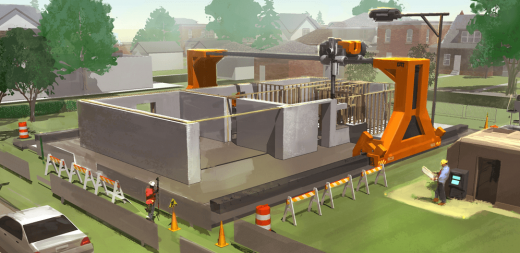
Fig 1: 3D printed concrete produced by Contour Crafting
Courtesy: 3Dprint.com
2. Concrete Printing – This printing method is also based on the same principle as Contour Crafting except there are some slight changes. Here, the printer can print the entire geometry of a layer instead of printing the outer edge first. To build a certain structural component, the raw material is premixed and is stored inside the pump that is kept outside the printer. Meanwhile, a small hopper that is present above the nozzle, stores the printed materials and connects the pump by a pipe. It has higher speed compared to Contour Crafting and also has high strength. The only disadvantage is that there are high performance requirements to suit the setting and hardening time.
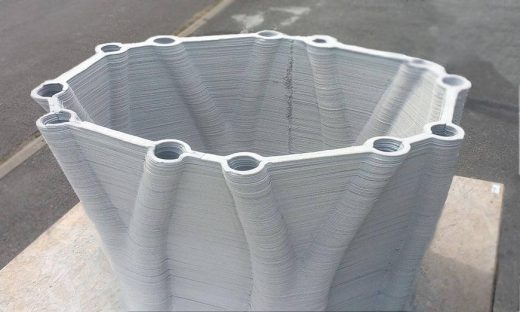
Fig 2: Structure made from Concrete Printing
Courtesy: Sculpteo
3. D-Shape – This method is based on the principle of powder deposition where the structural component is built by the bonding between the powder and chemical agent (binder). The printing head is the core of the system that consists of a series of nozzles and can spread both the chemical agent and the solid powder. At first, the powder layer having certain thickness is evenly spread by the printing head and the homogeneous pressure is applied to the powder layers by the rolling cylinders. Secondly, the chemical agent is spread on the powder layer following the predetermined location. Since the distance between the nozzles is longer than the drop diameter of the chemical agent, it is necessary to change the direction of the printing head to make sure that the gap between the nozzles can be filled. The printing speed is medium here and it is suitable for medium-sized structures. It has high strength similar to the Concrete Printing method. The only disadvantage is that it has lower resolution and massive powder materials are needed.
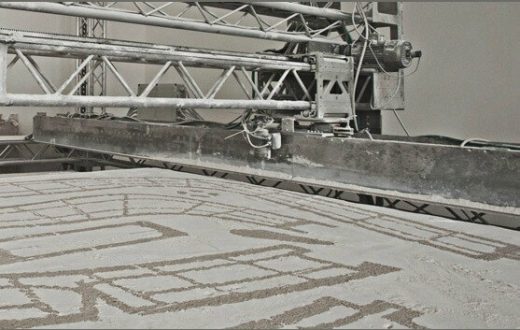
Fig 3: D-Shape 3D Printing
Courtesy: New Atlas
Materials and mix proportion design
Like any ink of a printer, concrete filaments can be easily extruded through the pipe-pump-content of 1.9%. The intrusion of accelerators and retarders can also optimize the content of cementitious composites. It has been observed that adding mineral additives (including micro silica, quartz flour, fly ash and shell rock flour) and polycarboxylate plasticizers can control the rheology of the cementitious composites and improve the workability. Furthermore, the addition of micro silica not only improved the compressive strength and ultimate flexural strength by 55% and 88%, but also increased the flowability of the composites. The addition of quartz flour had similar influences to micro silica in rheological parameters, but twice the expense. At the same time, the composites mixed with quartz flour had a lower strength compared with micro silica. For fly ash, the flowability and compressive strength of composites first increased with increasing the fly ash content and then decreased as the content exceeds 25% of the cement mass.
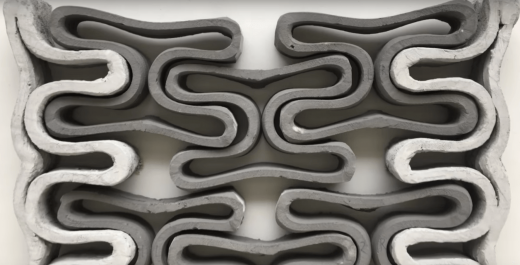
Fig 4: 3D printed concrete made from fly ash and steel slag
Courtesy: Material District
Regarding aggregates, it was found that under the same pumping conditions, sand of different sizes, grain shapes and fineness modulus had no obvious effect on the extrusion. With fixed mixing proportion, the increase of fineness modulus of sand increases the flowability, mechanical properties and numbers of stable printed layers but decreases the viscosity and the printing width of a single layer. However, the manufactured sand has a higher pipeline resistance which can generate much heat and decrease the workability of cementitious composites. This is because the manufactured sand has discontinuous gradation and large surface area in comparison with river sand. Therefore, choosing an effective sand according to different design requirements is necessary for 3D printed concrete. Efforts were also made to replace some sand with copper tailing for preparing 3D printed concrete which resulted in obtaining excellent results. They found that increasing the content of copper tailing enhances the flowability of concrete, but decreases the buildability. In this manner, a large number of non-degradable copper tailings are properly utilized, which in turn improves the environment and enhances economic efficiency. Moreover, it was found that geopolymer-based materials have excellent buildability, extrudability, and shape retention.
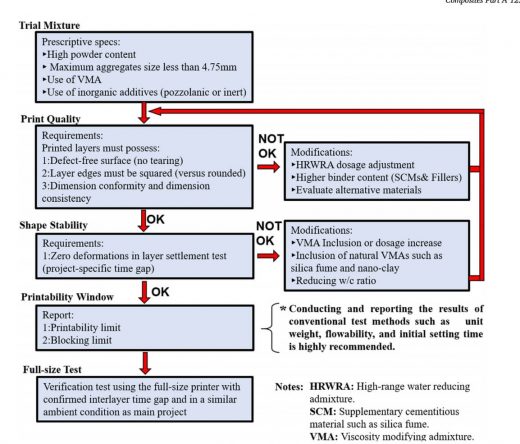
Fig 5: Framework for laboratory testing of printing concrete in a fresh state.
Courtesy: Science Direct
Mechanical Properties of 3D printed concrete
Researchers also discovered the mechanical properties of 3D printed concrete, including compressive strength, bond strength and flexural strength. Since the 3D printed structure is stacked layer by layer, this progress inevitably produces a large number of voids, resulting in the structure anisotropic and weakening the structural capabilities. It was found that the mechanical properties of 3D printed concrete had apparently orthotropic behaviour.
The bond strength between printed layers can also significantly affect the hardened properties of 3D printed concrete. Many researchers found that the tensile bond strength decreases with increasing the rest time, this increased time can be defined as the time interval during which the mixed concrete lost its fresh properties in the printer before the printing. It was believed that the tensile bond strength is positively correlated with the adhesion, whereas the adhesion is negatively correlated with rest time. The high modulus of the initial layer in 3D printed concrete hinders the good contact and mix at the interface of different layers. Moreover, it was also found that increasing the rest time improves the stability of layers. Increasing 20 min per layer can avoid detrimental deformation but increase the total construction time. In addition, heat application can also improve the stability of layers. A 528-degree Celsius heat gun was attached to the nozzle and found that the improvement by heat application is higher than that by delaying 10 min of the rest time, but lower than that by delaying 20 min of the rest time.
In the case of tensile bond strength, it first rapidly decreases in the first few minutes and then slowly decreases with increasing the rest time. Furthermore, the average tensile bond strength decreases with increasing the nozzle speed. This is because the higher the speed, the easier it is to create voids. In general, the nozzle standoff distance (distance from the nozzle to the deposition interface) is equal to the width of the nozzle. Researchers defined this distance as zero and found that the bond strength significantly decreases with increasing the standoff distances between two and four-millimetres.
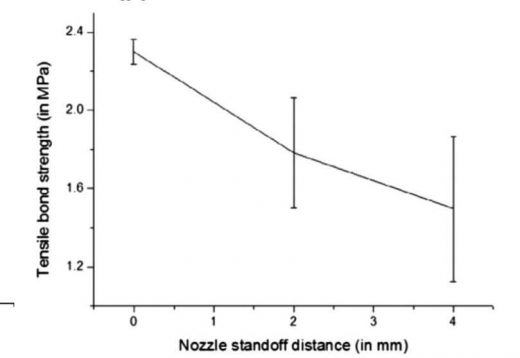
Fig 6: Nozzle standoff distance on tensile bond strength
Courtesy: Science Direct
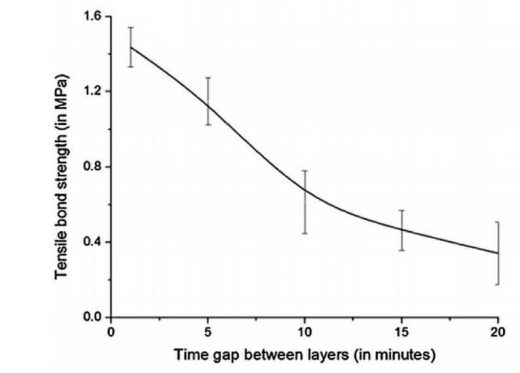
Fig 7: Effect of time rest gap in 3D printed concrete
Courtesy: Science Direct
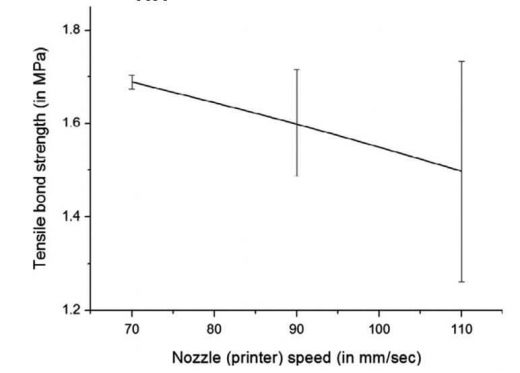
Fig 8: Effect of nozzle speed on 3D printed concrete
Courtesy: Science Direct
Case Study in Jordan
In this section, an analytical study of Ras Alain Multipurpose Hall was undertaken in order to analyse conventional construction in Jordan. Also, architectural and structural drawings were collected from Greater Amman Municipality and analysed in order to compare the materials’ cost with the cost of the same building when built using 3D printed concrete. Ras Alain Multipurpose Hall, located in Ohud Southeast Amman, was a one-storey building with a conventional form, stone cladding, and concrete construction. Furthermore, it was a public building owned by the government which was the targeted group to apply 3D printing so that better governmental projects could be constructed with lower cost and faster time. This building has a total area of 350 square meters (m2), 477 m2 exterior wall area, and 438 cubic meters (m3) total concrete volume Also, it cost 240,716 Jordanian Dinar (JD) according to Greater Amman Municipality. It was modelled using Revit software, and each zone was represented as an individual zone according to its function. In this section, the construction works above ground level of external walls, internal walls, and concrete works are presented first and then, the materials’ quantity and cost estimation are calculated.

Fig 9: Ras Alain Multipurpose Hall Exterior
Courtesy: Journal of Engineering
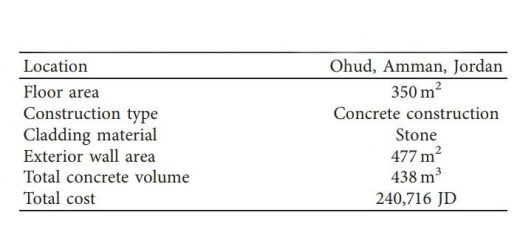
Table 1: Basic Data of Ras Alain Multipurpose Hall
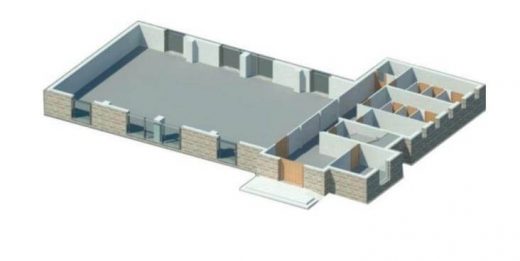
Fig 10: Ground floor plan with zoning Ras Alain Multipurpose Hall
Courtesy: Journal of Engineering
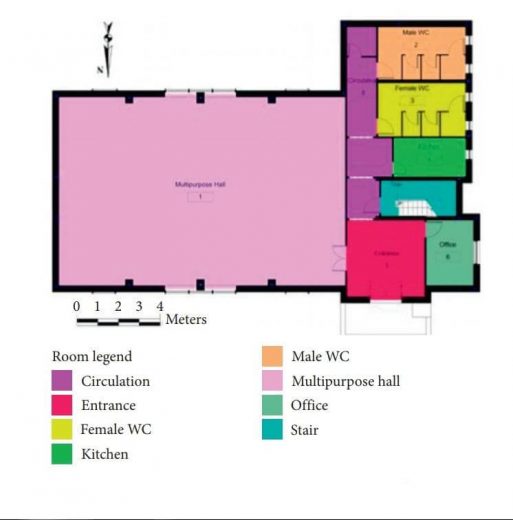
Fig 11: Perspective plan of Ras Alain Multipurpose Hall
Courtesy: Journal of Engineering
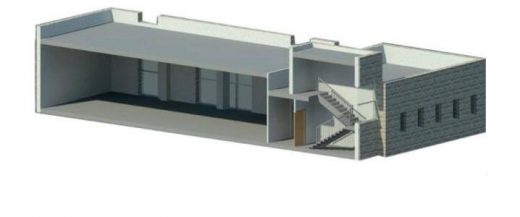
Fig 12: Perspective section of Ras Alain Multipurpose Hall
Courtesy: Journal of Engineering
Following are the details of the house using conventional method-
- Concrete compressive strength of 20 MPa was used for external walls behind the stone. Reinforced concrete (RC) was used for stairs and slabs on grade with a concrete compressive strength of 25 MPa. A concrete strength of 30 MPa was used for RC members of columns, slab, beam, and stairs.
- The external wall of Ras Alain Multipurpose Hall was a conventional wall consisting (from the inside out) of a 10 cm plastered hollow cement block wall, 3 cm of extruded polystyrene insulation, and 5 cm stone cladding attached to a 17 cm concrete layer.
- The internal walls of Ras Alain Multipurpose Hall were made of hollow cement blocks with 10 cm and 20 cm thicknesses.
- The cost of each external wall, internal walls, and concrete members above ground level of Ras Alain Multipurpose Hall was equal to 57,947 JD.

Table 2: Total cost of Ras Alain Multi-Purpose Hall as per conventional method
The building model is first converted to an STL file and sliced into layers to send the order to the 3D printer. The layout of one single layer is converted into a model which consists of edge and vertices. Edges represent the walls, and the vertices represent the intersections, corners, or the end points of wall segments.
Following are the details of the house using 3D printed concrete –
- Here, self-compacted concrete was used to expedite concrete compaction while maintaining the quality of the structure. It addresses the formwork, aggregate, and rebar issue by using fibres that improve the cohesion of the concrete mix. Extruded self-compacted concrete was used for external walls, internal walls, slabs, beams, columns, and stairs. An array of cementitious materials could be used with different proportions of concrete or polymers where the maximum strength of a cementitious mix could reach 70 MPa strength.
- Steel frames were to be constructed first to support the 12 m span of slab level.
- Here, the layers of self-compacted concrete were gradually built up to form the external hollow core walls that were three times stronger than the external walls built with conventional concrete. These walls could also be customized to simultaneously add in plumbing, electrical fixtures and even infrastructure pipes. To build the 30 cm thickness, the nozzle built the outside edges with thickness of 5 cm, then it built 2.5 cm thickness of the central axes, and finally, it built 2.5 cm thickness of the zigzag line in the two sides of the central axes to ensure the coherence of the wall. After the whole walls were constructed, it would be cladded with stone.
- The internal wall was constructed in two types: the first one was solid core wall with 10 cm thickness and the second type was a hollow-core wall with 15 cm thickness where the extrusion nozzle built the outside edges with thickness of 2.5 cm, and then it built 2.5 cm thickness of the zigzag line to ensure the coherence of the wall.
- The cost of extruded self compacted concrete built by 3D printing per m3 was estimated to be about 27.3 JD and the total cost of concrete material was equal to 8872.5 JD.
Discussions
From the case study we saw that the efficiency of applying 3D printed concrete in a building in Jordan as an alternative to conventional concrete is much more beneficial to the whole world. Here, the analysis shows that Ras Alain Multipurpose Hall constructed by 3D printed concrete costs 8,872.5 JD with the exception of the stone cladding and insulation works. On the contrary, it costs 57,947 JD for conventional construction. To compare the cost of the two construction types, conventional construction with the exception of the stone cladding and insulation works equals 57,947–2,560–2,7950–1,150 = 26,287 JD. So for Ras Alain Multipurpose Hall, the concrete cost based on 3D printing which equals 8,872.5 JD is less than the conventional construction cost which equals 26,287 JD. As a result, 3D printing reduced 65% of the conventional construction cost of material if it was applied in Jordan. The equipment cost, construction time, and labour costs were not calculated herein since they depend on the required size and speed of printer for the project (not just this building) and the working hours during the day which are not specified here.
The cost of 3D printed concrete may be lower than conventional concrete because there is no over-engineering and material wasted; or it may be higher than normal concrete because it uses a lot of expensive, fine additions such as nano-clay and special chemical admixtures. The cost of equipment mainly generates in the early days of application because there is so much equipment such as the fabrication of printing heads. But when the 3D printed technology achieves its large-scale implementation, the cost of equipment will be lower than that of the equipment cost in traditional construction. In all, the cost of 3D printed concrete is relatively low compared with traditional construction, which is highly related to the development of 3D printed concrete.
Conclusion and Future scope
The development of 3D printed concrete is revolutionary with different methods introduced to apply it. The main printing methods are D-Shape, CC, and Concrete Printing. All of them have successfully achieved component printing without any formwork or vibration. High printability of 3D printed concrete is highly dependent on the high workability and mechanical properties, both of which can be optimized by materials selection (such as various types of fibres, admixtures and high-quality sand) and printing parameters (such as rest time, nozzle moving speed and nozzle standoff distance). Researchers have obtained optimal mixed proportions and proposed a framework to evaluate the printability of the concrete used for large-scale 3D printing. In addition, some other materials such as copper tailing, geopolymer-based material and the regolith on the other planets are also found to prepare 3D printed concrete.
3D printed concrete technology will create a new era of sustainable construction with high building efficiency, low labour cost and less construction waste. It can be used to build military bunkers in the wild, construct affordable housing in low-income countries, build in Lunar or Mars using in-situ material, and print the complex construction when the formwork is difficult to manufacture, repair or restore. Furthermore, combined with nanotechnology and advanced material composition technology, 3D printed concrete technology is more suitable for the fabrication of (ultra) high performance and smart/ multifunctional concrete, such as reactive powder concrete, fibre reinforced composites, polymer modified concrete, nano-engineered cementitious composites, self-sensing concrete, and self-healing concrete. At present, many buildings have been successfully printed and even put into practice, but it still requires a lot of effort to promote the development of 3D printed concrete technology.
Also, lightweight concrete blocks can be created using 3D printers by making use of recycled concrete. This would greatly reduce the emission of carbon dioxide in the atmosphere promoting greener environment. Aesthecity can be increased with the help of these concrete and it will pave a new way towards bringing innovation to the construction world.
References
- Zhang Jingchuan, Wang Jialiang, Dong Sufen, Yu Xun, Han Bauguo, A review of the current progress and application of 3D printed concrete, Elsevier, Composites Part A 125 (2019) 105533.
- Allouzi Rawan, Al-Azahari Wael, Allouzi Rabab, Conventional Construction and 3D Printing: A Comparison Study on Material Cost in Jordan, Hindawi Journal of Engineering, Volume 2020, Article ID 1424682, 14 pages.
- Manju R, Deepika R, Gokulakrishnan T, Srinithi K, Mohamed M I, A Research on 3d Printing Concrete, International Journal of Recent Technology and Engineering (IJRTE) ISSN: 2277-3878, Volume-8 Issue-2S8, August 2019.
- Luo Wenjie, Ma Xinchen, Yin Jian, Application and Research on Building 3D Printing, Journal of Critical Reviews ISSN- 2394-5125 Vol 7, Issue 12, 2020.
- Buswella R.A., Leal de Silvab W.R., Jonesc S.Z., Dirrenbergerd J., 3D printing using concrete extrusion: A roadmap for research, Elsevier, Cement and Concrete Research 112 (2018), 37-49.
If you have a query, you can ask a question here.


